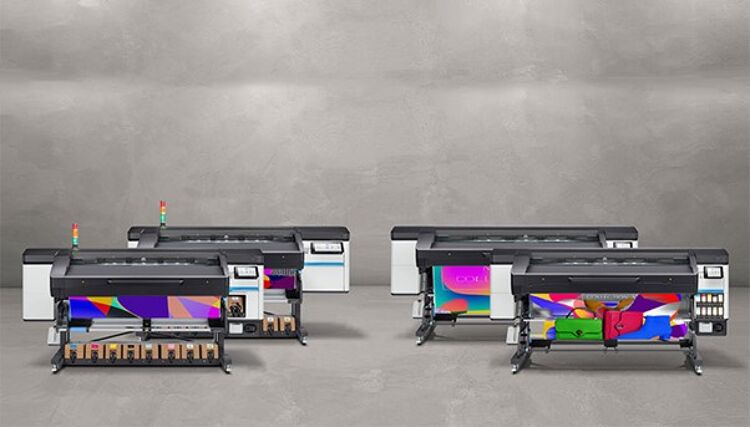HP - how to leverage wide format energy use for business efficiency

HP’s Worldwide Large Format Environmental Lead, Noëlle Peutat, on assessing energy use in Latex technology.
How can we compare investment in a digital printer with its energy consumption?
For a typical HP Latex printer owner, energy consumption represents a negligible fraction of total cost of ownership per month. However, HP still innovates to improve energy efficiency as much as possible. For instance, a number of HP Latex printers are ENERGY STAR® certified. An investment in HP Latex technology and its water-based Latex inks is also balanced with meeting a wider range of sustainability needs – such as environmental regulations and allowing applications in spaces such as hospitals and schools.
How does energy consumption look in an end-to-end production workflow using HP Latex?
HP continues to invest in sustainable innovation with each new generation of large format printing systems, ensuring that wherever HP technology is used as part of a production workflow, energy consumption is minimised.
Where are the spikes in an HP printer’s energy consumption, and where would the troughs be?
As HP Latex technology is water-based, energy is required to heat and evaporate the water, so there is a spike when the press is warming up. For short-term signage or applications in low transit areas we recommend printers do not laminate – this saves energy, as well as time and cost.
What are the best ways to save energy when dealing with customer demand: is it cheaper to power down or leave ‘on’?
Our low-volume printers are ENERGY STAR® certified and utilise standby mode to minimise energy consumption. Larger HP printers implement ‘low power mode’, which helps reduce energy use but keeps essential functions going, such as maintaining white ink systems, so the printer provides consistent print quality every time.
‘Low power mode’ reduces the number of reprints, which ultimately waste resources and energy. We are also seeing large numbers of HP Latex users obtain their energy from sustainable sources, reducing the impact on the environment.

Caption: Noëlle Peutat
How can assessing energy use feed into business efficiency generally?
Assessing energy use can reveal opportunities for efficiency, but printers should also be assessing up-to-date maintenance, workflow, substrate choices and ease of operation. HP Print OS gives printers the power to stay on top of production even when away from the printer, and get data-driven insights for better decision-making. It also enables them to easily upload substrates, as well as visualise calibration status remotely, reducing repetitive – often energy-intensive – processes.
How else can we use this auditing of energy consumption to identify further ways to decarbonise?
Decarbonising includes reducing energy consumption – but must also go beyond it. For instance, HP Latex technology is designed for end-to-end sustainability, with an approach that includes energy-efficient printers, water-based inks and odourless prints that let printers work in more indoor spaces.
HP Latex also benefits from our new HP Eco-Carton Ink Cartridge, containing recycled and certified fibre, and recycled plastics from our closed-loop recycling process, beverage bottles, and UL-validated ocean-bound plastic resins. Customers can recycle the outer carton locally and return the inner bag for free via HP Planet Partners, avoiding any materials going to landfill. The HP Eco-Carton Ink Cartridge reduces plastic use per litre of ink by 80% and decreases lifecycle greenhouse gas emissions by 66% compared with a plastic ink cartridge thanks to savings associated with manufacturing and transport.
Is HP committed to providing KWh statistics for their printers under standard operating parameters?
All HP products come with a datasheet. In that sheet are the power stats, including peak, sleep and average. So we’re fully transparent.
Topics
Interested in joining our community?
Enquire today about joining your local FESPA Association or FESPA Direct
Recent news

Streamlining personalisation with tech: Insights from the SmartHub Conference 2025 speakers
Personalisation Experience 2025 (6 – 9 May 2025, Messe Berlin, Germany) is running its inaugural SmartHub Conference from 6 – 8 May 2025.

Special Effects in DTF: How Neon Inks Are Making Apparel Pop
Neon fluorescent inks are the latest innovation in DTF printing, offering vibrant, eye-catching effects under both daylight and UV light, giving apparel decorators a competitive edge. Testing shows good wash durability, though market perception of added value is still developing. With increasing adoption and ongoing technological advancements, neon represents a significant upgrade for creative customisation.

Unlocking Growth Opportunities in the Printed Personalised Apparel Industry
The printed personalised apparel industry is booming, projected to reach $10.1 billion by 2030. Driven by consumer desire for self-expression and branding needs, technological advancements like DTG/DTF and e-commerce integration are key. Sustainability, eco-friendly materials, and on-demand printing are crucial growth drivers. Businesses leveraging these trends, including AI and social media, have significant commercial potential.

How to grow your business with white ink applications
Opaque white ink is revolutionising signage, vehicle graphics, wallcoverings, short-run and wood packaging, and window blinds by enhancing vibrancy and clarity. This enables printers to offer high-demand, standout products, boosting profit margins. HP Latex white ink applications and their large format printing solutions will be showcased at FESPA 2025 in Berlin.